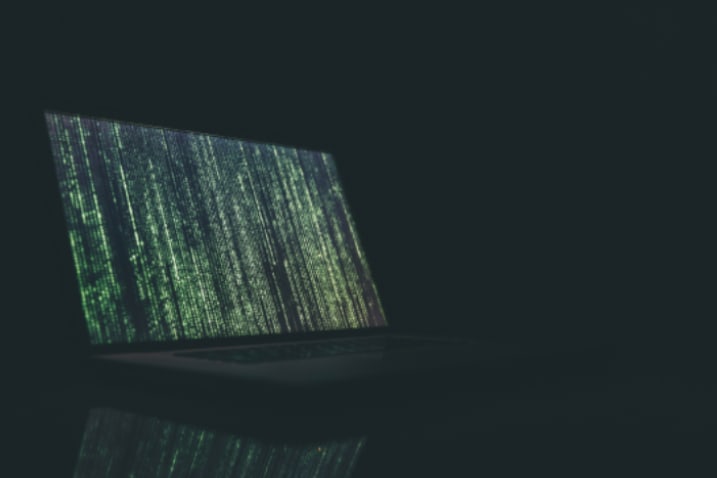How to Counter AI & Cybersecurity Threats to Physical Security

Modern physical security systems are more robust than ever, equipped with advanced access technologies like mobile and biometric credential readers, as well as video surveillance management capabilities. But as security systems have become more sophisticated, so have the threats that target them — especially since the advent of artificial intelligence.
Hackers leveraging AI against access control security systems have successfully used a range of AI-powered tactics to gain access, avoid detection, and maximize the impact of their attacks. With the frequency and effectiveness of these threats on the rise, organizations need to bolster their defenses with advanced threat detection solutions. To defend your physical security systems against today’s most skillful attackers, investment in leading threat analysis capabilities and access control solutions is non-negotiable.
How Does Artificial Intelligence & Cybersecurity Impact Physical Security?
The rise of the Internet of Things (IoT) has made internet-connected devices indispensable for businesses of all sizes — and increased their vulnerability to cyber physical attacks. Any device that’s connected to the internet presents an opportunity for hackers to gain access and compromise your company’s physical security, whether it’s through IoT-enabled environmental monitoring systems, connected security cameras, smart locks, or something else.
AI security capabilities are essential for securing the myriad IoT endpoints that bad actors can use to compromise your physical security systems. The reality is that today’s hackers use AI and machine learning to craft attacks that are increasingly difficult to predict and counter.
Advanced capabilities in threat detection, intelligent event analysis, and sophisticated access control solutions like those provided by LenelS2 are necessary to identify and eliminate risks before they escalate. Innovations like AI-powered camera analysis and intelligent threat detection systems further enhance your ability to safeguard your assets.
Why is Addressing AI & Cybersecurity Threats Important?
In the past, smaller businesses, educational institutions, and governmental organizations could get away with more lax security measures. Hackers primarily focused their attention on larger enterprises with high volumes of sensitive information and deeper pockets for ransom payments, but that’s no longer the case.
In 2023, nearly three-quarters of small business owners in the U.S. reported being targeted by a cyberattack. Going forward, that number will only rise as AI technology becomes more advanced and enables hackers to efficiently target a broader swath of organizations.
This means organizations that could previously fly under hackers’ radar are no longer safe. Any business with an internet-connected security system is vulnerable, putting your proprietary data, customer information, and your business’ reputation on the line.
How Do AI Threats Exploit Physical Security Vulnerabilities?
No physical security system, even one linked to well-protected servers, is immune from AI-driven cyberattacks. Hackers utilizing AI can methodically search for any exploitable element within your network, including servers, devices like surveillance cameras, and access control systems. These AI tools are especially skilled at pinpointing network weaknesses, such as flaws in authentication processes or unpatched vulnerabilities.
Unlike human attackers, who may target specific vulnerabilities based on strategic planning, AI attacks are relentless in nature, probing every possible entry point with a speed and efficiency that far exceeds human capabilities. Once these AI-enabled attackers breach your system, they can cause significant damage by stealing sensitive data or locking out legitimate users through ransomware attacks. What’s more, AI-driven threats can attack on multiple fronts simultaneously, continuously adapting and evolving to exploit new vulnerabilities as they emerge.
What are the Potential AI & Cybersecurity Threats to Physical Security?
Hackers can use many methods to exploit IoT devices and gain access to your physical security systems. And with the rise of AI-driven attacks, defending against all possible entry points has become both more critical and more difficult.
AI-Powered Attacks
As discussed above, AI-powered attacks on your physical security systems exploit vulnerabilities in IoT devices, such as your surveillance cameras and access control systems, with unprecedented sophistication. Whereas human-driven attacks are strategically targeted and often follow predictable patterns, AI-driven attacks are multifaceted and relentless.
AI-driven threats not only target your physical infrastructure but also cleverly blend with traditional cyberattack tactics like phishing and social engineering, automating these processes to become more efficient and harder to detect. The advanced nature of AI in these attacks means that traditional pattern-based defenses you may have relied on in the past no longer suffice.
IoT Vulnerabilities
IoT devices are particularly susceptible to AI-driven cybersecurity attacks due to several inherent vulnerabilities. Weak passwords and unsecured default settings present easy targets for sophisticated AI algorithms designed to test and exploit these oversights. Additionally, devices connected to open networks are exposed to an elevated risk of interception and manipulation by AI-powered threats.
Ransomware Attacks
In ransomware attacks on physical security systems, cybercriminals infiltrate and immobilize your access control systems by encrypting vital data and holding it hostage until a ransom payment is made. These attacks lock you out of essential systems, impacting your ability to conduct day-to-day business operations. Besides the monetary costs, these attacks severely disrupt your security operations by preventing you from responding to physical security threats.
Insider Threats
Bad actors within your organization pose a significant risk to your physical security systems if you don’t have appropriate access controls in place. These individuals can exploit their positions to bypass security measures, facilitating unauthorized physical access or the sabotage of surveillance and access control systems. The impacts of such actions can be profound, ranging from the theft of sensitive information to the compromise of the physical safety of your premises and people.
Social Engineering Attacks & Lack of Training
Through deceptive tactics, attackers can manipulate your personnel into granting unauthorized access to secure areas or divulging sensitive information. This category of threats is called social engineering because it exploits the human element of your security protocols.
The impact of breaches can range from data theft to physical intrusion. The most effective countermeasure is to invest in comprehensive training for your employees and anyone else with access to your systems (e.g., students, volunteers, residents). It’s critical to equip all users with the knowledge to recognize, resist, and report social engineering attempts.
Supply Chain Attacks
Keep in mind that cyberattacks that don’t target your systems directly are also a threat because attackers can find ways into your systems via third-party vendors and suppliers. A notorious example is the 2020 SolarWinds hack.
SolarWinds is a major software company that provides network management solutions and other services for thousands of companies and governmental organizations. Once hackers infiltrated SolarWinds’ IT networking monitoring solution, they were able to gain control over data and networks belonging to the company’s clients and partners.
This incident illustrates how a single vulnerability can have cascading effects, underscoring the importance of diligently vetting and monitoring third-party suppliers to protect your physical security assets.
How Do You Counter AI & Cybersecurity Threats to Physical Security?
There’s no one-size-fits-all solution to counteracting AI-driven cybersecurity threats. It takes a combination of advanced technology, regular system upkeep, and robust security protocols.
AI-Powered Security Capabilities
AI-driven cybersecurity attacks can swiftly bypass your security measures if they aren’t equipped with equally advanced AI-based security solutions. AI security and automation capabilities can help you anticipate, recognize, and neutralize the most sophisticated AI-powered attacks.
These tools proactively monitor your network and physical security systems for signs of unusual activity, effectively anticipating potential attacks before they occur. By utilizing machine learning algorithms, AI threat-detection systems learn over time, continually improving their ability to identify and respond to threats based on new data and attack techniques they encounter.
Regular Software Updates
To keep your car running smoothly, you need to keep up with routine maintenance requirements like changing the oil or replacing the tires. It’s no different for your security system.
Regular upkeep is required to ensure your defenses are airtight. Software should be updated once per month at a minimum. This includes patching servers and applications, as well as updating third-party components and libraries. The latter is especially critical if you develop your own software.
Your update regimen should include system hardening measures, such as closing unnecessary ports to the internet, to prevent unauthorized access attempts. This proactive approach is crucial in mitigating vulnerabilities that could be exploited by AI-driven cyber attacks.
Use Strong Authentication Methods
Eliminating weak ciphers and password authentication policies from your systems goes a long way in defending systems against intruders. Instead, multi-factor authentication (MFA) methods should be your default choice whenever possible. As its name suggests, MFA requires users to provide two or more verification factors to gain access to a resource, such as an application, online account, or IoT device. This makes MFA-protected devices and accounts much harder to hack. You should also level up the security of your devices by customizing default configurations and ensuring your networks are securely encrypted.
Encrypt Data
Encrypting your data converts it into a coded format that can only be read by users with the proper decryption key. This tactic helps ensure hackers can’t benefit from your sensitive data, even if they do get their hands on it.
Often, companies take care to encrypt data while it’s being transferred across networks. But organizations too often leave stationary data that’s not actively being used in a readable format. This is a misstep that leaves data vulnerable if hackers can breach other security measures. Implementing robust encryption protocols for your data at all times fortifies sensitive information against unauthorized access and potential misuse.
Implement Access Control
Strict access control measures offer a physical defense against bad actors seeking entry into areas where sensitive data and computer systems are located. You can regulate who has access to specific rooms and resources by issuing access keys, such as mobile credentials, that can be remotely controlled and activated. This helps prevent unauthorized access to spaces containing critical information, limiting the potential for data breaches along with threats to your building’s physical security.
Conduct Regular Security Audits
You can’t fix system weaknesses you don’t know you have. Regular security audits and threat-based analysis help you pinpoint and address potential vulnerabilities and access points before hackers have a chance to exploit them. The audit process should include removing connected IoT devices that are no longer in use. These devices can become vulnerabilities if left ignored or un-patched. Similarly, make sure to promptly offboard departing employees, revoking access to accounts and systems as soon as they leave the company.
Employee Security Training
Robust and frequent security awareness training is important to educate employees about emerging threats, security best practices, and why it’s important to follow the security guidelines you have in place. For example, employees may try to circumvent authentication measures by sharing passwords or PINs for the sake of convenience. However, repeated education on how password sharing exposes your organization to security threats helps reinforce why following best practices is important.
Your training resources should also cover how to spot phishing attacks. That includes information on how to recognize suspicious emails and why it’s critical to avoid downloading attachments or clicking links from unverified sources. In addition, make sure to inform employees about the importance of regularly updating system software and applications.
Similar employee training is also essential for maintaining physical safety across your buildings and worksites. Most commonly, bad actors attempt to gain entry by slipping in behind an authorized employee when they use their credentials to open a door. This tactic is often called tailgating or piggybacking. Ensure employees know to never hold open doors for people they don’t know and to be aware of their surroundings at all times.
Incident Response Plans
An incident response plan is an essential framework for addressing both anticipated and unforeseen threats so you can respond to all security breaches quickly and in a coordinated fashion. Your plan should include detailed instructions for who on your team is responsible for which actions during an incident. It should include contact information and establish reliable communication channels to reach core team members swiftly when an incident occurs. Remember to include protocols for documenting and escalating the situation to ensure a structured and effective response.
How Can LenelS2 Help Prevent AI & Cybersecurity Threats?
Protecting your buildings, people, and assets requires modern physical security solutions equipped with AI threat-detection capabilities to counteract increasingly sophisticated cybersecurity attacks. LenelS2’s security access control systems offer flexible solutions that can scale with your business needs to defend against an evolving AI-driven threat landscape.
In addition, our support solutions help to ensure your system hardening is complete and robust and that you have the resources to keep your employees up to speed on security best practices.
Are your properties more vulnerable than they should be? It’s time to upgrade your defenses with modern physical security technology.
Request a demo to learn more about the available LenelS2 solutions to meet your security needs. For organizations requiring dedicated support, our security system support team is on standby to provide expert assistance tailored to your unique challenges.
Please note, the material provided is for informational purposes only, is general in nature, and is not intended to and should not be relied upon or construed as professional, medical or legal advice. Individuals and entities using or referencing the materials are encouraged to consult a professional regarding any specific circumstance. LenelS2 expressly disclaims all responsibility and shall have no liability for any damages, injuries of any kind or any liability whatsoever suffered as a result of your reliance on the information set forth in these materials.




